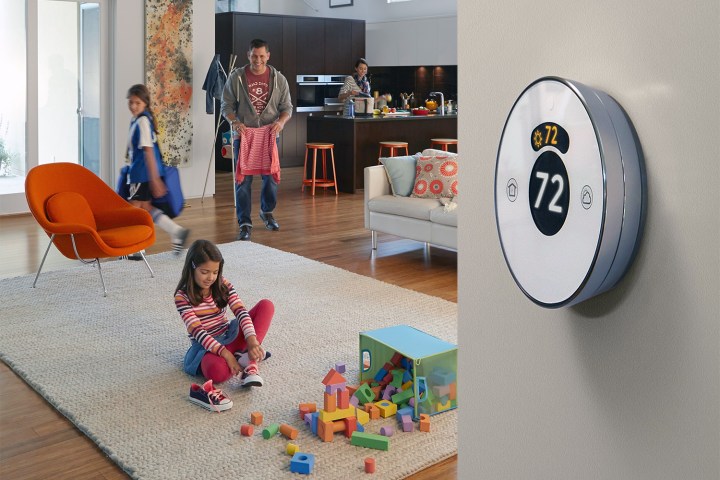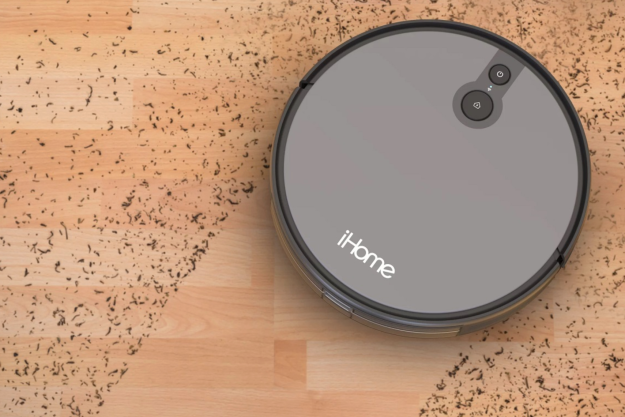
To help reduce the amount you’re spending on electricity, we’ve put together a helpful guide that covers strategies big and small to make heating, lighting, and powering your home cheaper and more efficient.
Before we cover some of the more involved methods, there are some obvious ones that you should absolutely employ in your efforts to lower your power bill but are simple enough they didn’t warrant full entries. We’re talking things like:
- making sure your vents are open when you’re trying to heat (or cool) your house
- turning off lights in rooms you’re not using
- unplugging chargers and electronic devices when not in use
- closing doors to help regulate room temperatures
- opening your shades/blinds during the day, and closing them at night
While these are little strategies everyone has heard before, they don’t require too much effort, and the energy savings can quickly add up.
Instead of the above strategies, we wanted to focus on methods that might not be as obvious but that will save you a good chunk of change. We’ve split these up into three levels of difficulty: Easy, intermediate, and advanced. Obviously, the higher the difficulty, the more time and effort you will need to put in, but their payoff is higher. That said, integrating any of these changes, big or small, will help knock down your power bill and save you money.
Easy
Turn Down the Heat

It may seem as if this belongs in the “obvious” category, but when it comes to turning down the heat, it’s all about timing. Whether you’re leaving the house for a quick workout or taking the dog for a long walk, turning down the thermostat when no one is home to enjoy the temperature just makes sense. However, there’s also a particularly long span of time spent at home when you should be turning the thermostat down.
Some reports say sleeping in a cooler room is better for you than sleeping in a warm one. Not only that, but you’ll be saving money by not heating your house all night. Of course, this isn’t to say you should spend your nights freezing, as the health benefits only apply to the temperature of the air, not under the covers. So bundle up under a few extra blankets, and snooze soundly knowing you’re saving a few dollars.
Hack Your Washes

The energy and water used when washing dishes and cleaning clothes make up a considerable portion of your monthly energy expenditure, but there are a few easy ways to make getting clean less expensive. Washing clothes in cold water, which is better for colorful clothes anyway, will save a ton of electricity. This will change nothing about how you do laundry; you just push a different button. Similarly, taking quicker, cooler showers will also reduce your heat (and water) bill.
When it comes to dishes, use lower heat. It’s the same as washing clothes: You don’t need the heat to be as high as you think. Yes, hot water is important, especially for sanitizing dishes. However, dishwashers have different settings for a reason; the manufacturer wouldn’t add a setting that made washing dishes unsafe.
When it comes to drying clothes, the most important thing is that you don’t overload the dryer. Though it may seem faster to just squish everything you own into a dryer, if the clothes don’t have room to move, they won’t dry properly. This leads to weird-smelling clothes and the dryer working harder than it should be to dry everything. Just do two smaller loads with a lower heat. Of course, you can always avoid the dryer entirely and instead hang-dry your clothes.
Cool Down Your Water Heater

You can also go straight to the source to change the temperature of your washes: your water heater. Turning down your water heater is a simple fix, but it requires some investigation first. Most water heaters are set to 140 degrees Fahrenheit, but in most cases it is safe to reduce that temperature to 130 or 120 degrees Fahrenheit. This is safe for most people, but if you have respiratory illnesses or a compromised immune system, it may be best to stick to 140 degrees Fahrenheit, as Legionella bacteria can survive at lower temperatures than that. Again, this is safe for most people, but it’s still worth keeping in mind.
Furthermore, if your dishwasher does not have a heat boost, then keep the temp at 140 degrees Fahrenheit to ensure your dishes come out fully sanitized.
These are simple and practical changes that will help save you some cash each month on your utility bill. However, there are plenty more things you can do to increase those savings.
Intermediate
Minor Insulation Upkeep

While insulating your home is important, an entire overhaul of its insulation is difficult and time consuming — not to mention expensive. Instead, there are some small changes and upkeep you can employ to close the gaps in your insulation.
First, wrap your hot water pipes. To prevent the heat from radiating out, and therefore being lost, wrap your hot water pipes in simple pipe insulation. Another major source of wasted energy is from leaking heat. Small holes and openings let out the heat (or cool air) you’re trying to fill your home with, which in turn makes your heating/cooling appliances work harder. Apply expanding foam, caulking, and/or weather stripping to any gaps or holes around your windows, door frames, and other openings in your home. A hardware store will have weather stripping that has a sticky back, so you can just cut it to size and stick it under anything that might be leaking.
Update Lighting

Buy LED or CFL light bulbs. While a bit more expensive upfront than those older incandescent bulbs, these newer bulbs will last you far longer. They’re also safer, as they use less energy, and use it more efficiently, meaning that there is less heat produced. We understand how replacing the lights in your home can be a chore; there’s a large upfront cost, it can be tedious, and some dislike the brighter light quality of LEDs and CFLs. However, you’ll quickly make up the initial cost and then some given how much you’ll save on replacements and on your monthly energy bill.
You could also consider upgrading some of your regular bulbs to smart light bulbs, or installing smart light switches to control sections of your home’s lighting. With brands like Kasa and Wyze, you can turn lights on/off, adjust brightness, and monitor the energy efficiency of your fixtures all through an easy-to-use app.
Integrating these kits with popular voice assistants like Amazon Alexa,
Become a Heat Miser

Perhaps one of the best things to do is to double check that your power meter reading matches what the power company is charging you. While it’s not all that common, there’s always a chance you’re being overcharged, especially if your bill is based off of estimated usage. Simply make a note of the meter reading for your apartment unit or home every one to three months, and report the usage to the power company if there are discrepancies.
Advanced
Get Efficient

One of the biggest, if not the biggest, source of a high energy bill is inefficiency. Inefficient insulation, inefficient appliances, inefficient heating, inefficient lighting — they’re all major sources of your energy expenditure. While the previous two sections covered methods for solving minor inefficiencies, they’re mostly solutions for symptoms of larger problems.
The first way to tackle issues with inefficiency is to install a programmable thermostat. This will take the guesswork and tedium out of adjusting the temperature in your home, as you’ll be able to create settings for certain times, ensuring your home stays comfortable when you’re there but also energy efficient when you’re not.
Popular smart thermostats like the Google Nest and Ecobee put the thermostat controls right in your hands. Using just your phone and smart thermostat app, you can raise and lower the temperature, set schedules and routines for the thermostat to follow, and control on the go. Own an Echo or Google Home speaker? Add skills for your smart thermostat, then control and customize your thermostat settings with simple voice commands like “What temperature is it?” and “Raise the thermostat 2 degrees.”
Next, replace appliances with Energy Star-certified electronics. This is especially crucial for older appliances, as, unsurprisingly, they are far less efficient than newer models. If possible, opt for High-Efficiency (HE) laundry machines and dryers. They clean just as well (if not better) than normal washers but use less water and are designed to work with HE detergents as well.
Appliances aren’t the only things that can be upgraded, as there are high-efficiency models of almost everything. Toilets, shower heads, windows, and doors can all be replaced with high-efficiency models, saving you money on not just your power bill but in some cases your water bill as well.
While the previous page made mention of insulation, completely overhauling your insulation is a much bigger task but one that will have a far greater impact on your power bill. This is particularly important for older homes. Pinpoint locations with outdated materials or places that have been poorly insulated (or not at all) and add as needed. Check out Energy.gov’s how-to guide for safe and easy-to-follow instructions on adding insulation to your home.
Go Sustainable

It’s one thing to be efficient; it’s another to be sustainable. It may be complicated and expensive, but switching your home to solar power, even just partially, could save you tons of cash. It may even make you money, by letting you sell energy back to the power company.
Finally, while we’re mostly concerned with electricity use and power bills here, it’s worth briefly discussing water. There have been some mentions of ways to conserve water, but one of the best by far is to install your own irrigation system. Much like with solar panels, the upfront cost is high and will likely require several days or weeks-worth of work in order to complete, but the savings will be worth it in the end.




